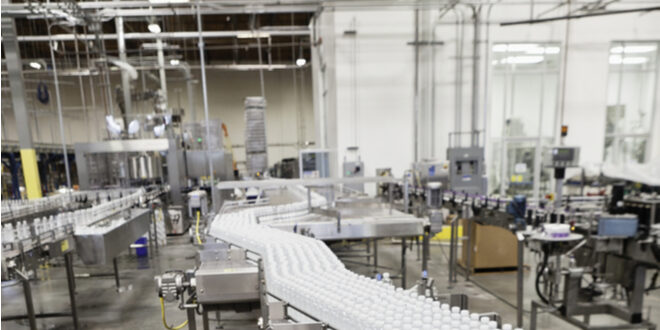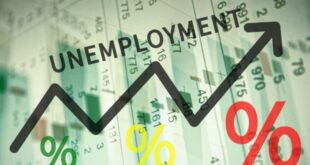Despite COVID-19 and the economic turmoil created, as well as rumors of a recession, manufacturing in Riverside and San Bernardino counties is approaching two years of uninterrupted growth. No one can say for sure, but several local experts believe that trend probably won’t change soon.
Maybe the Inland Empire manufacturing sector should stand up and take a bow.
For the past 22 months, manufacturing in Riverside and San Bernardino counties has grown without interruption, according to the Institute of Applied Research and Policy Analysis at Cal State San Bernardino.
That’s an impressive streak that started in September 2020, by which time the pandemic was in full swing and the economy in a lot of places had slowed down, or ground to halt.
It also included the onset of the worst inflation since the early 1980s. From February 2020, the month before Covid-19 hit, to April 2021, consumer prices rose 4.7 percent, according to the U.S. Bureau of Labor Statistics.
In June, the most recent numbers available, inflation nationwide was up 9.1 percent year-over-year, higher than the 8.8 percent predicted by Dow Jones.
But none of that, along with persistent rumors of a pending recession that have yet to come true, have caused the institute’s monthly index to drop below 50, the number that determines whether manufacturing in the two-county market is expanding or contracting.
Last month, the Inland Empire’s index was 56.2, up from 54.4 in May. That indicates that manufacturing grew at a slightly faster pace in June than it did the month before.
Production, new orders and employment were up last month, and prices continued to rise, although at a slower rate than they rose in May.
Now, slightly past the midway point of 2022, it’s impossible to predict exactly how long that trend will last, but there are reasons to believe it won’t stop soon, said Barbara Sirotnik, director of the research institute and a professor of statistics and supply chain management at Cal State San Bernardino.
“I’m an incurable optimist,” Sirotnik said in an email interview. “I think a year from now supply chain issues will have eased and prices will have come down somewhat. I’m betting that a year from now we will [have] slow and steady growth.”
Determining why Inland manufacturing has grown without interruption during such chaotic times is difficult, Sirotnik said.
“The Inland Empire index doesn’t always track the national figure, but in this case both the Inland Empire and the national index have remained above 50 since mid-2020,” Sirotnik said. “My take is that it’s a combination of relatively low unemployment and the fact that companies are looking to hire good people.
“Also, the existence of the vaccine has decreased hospitalizations and eased people’s fears about COVID-19, and attempts by the Federal Reserve to curb inflation [have worked].”
In some ways, Inland manufacturers were in a good position to deal with the pandemic, according to Sirotnik.
Most were able to split shifts, spread their workers out and require their people to use protective measures – masks, social distancing, etc. – during the pandemic, so they didn’t lose too many employees, either because they were afraid to work or they contracted the Corona virus.
That allowed manufacturers to continue producing enough goods so that by mid-2020, the Inland purchasing managers index showed growth in both manufacturing and the economy.
Also during the pandemic, most people stopped traveling and began spending their money in other ways: fixing up their house, buying exercise equipment or entertainment items like big-screen televisions.
“Manufacturing firms throughout the country had to pivot quickly to supply those items, and Inland Empire firms did a pretty good job of doing that,” Sirotnik said.
As always, there are some clouds on the horizon.
Supply chains continue to experience problems, the geopolitical crisis in Ukraine shows no signs of being resolved, rumors of a recession persist and another COVID surge remains a possibility.
Locally, manufacturers surveyed in the June index listed concerns regarding the local economy, including a stagnant labor market, a drop in imports caused by a slowdown in China, transportation costs, not enough supplies and higher gas prices.
“Nationwide, consumer confidence in June was at its lowest level in more than one year, so that’s a problem for the economy,” Sirotnik said. “But gas prices are beginning to decline, so if that continues, people’s willingness to buy products and enjoy services should improve.”
Much depends on what actions the Federal Reserve takes to fight inflation.
“Rapid rate increases could backfire and cause a recession,” Sirotnik said. “But I don’t see that happening in 2022.”
Despite the pessimism in the June index, the immediate future of Inland manufacturing is bright, according to one manufacturer who participates in institute’s monthly survey.
“I can only speak for myself, but I feel very good about the rest of the year,” said Bud Weisbart, vice president of A&R Tarpaulins in Fontana, which makes products for the aerospace industry. “We’re going to meet all of our sales goals this year, which is a good thing. Employment is up, and people are spending money.”
 IE Business Daily Business news for the Inland Empire.
IE Business Daily Business news for the Inland Empire.


